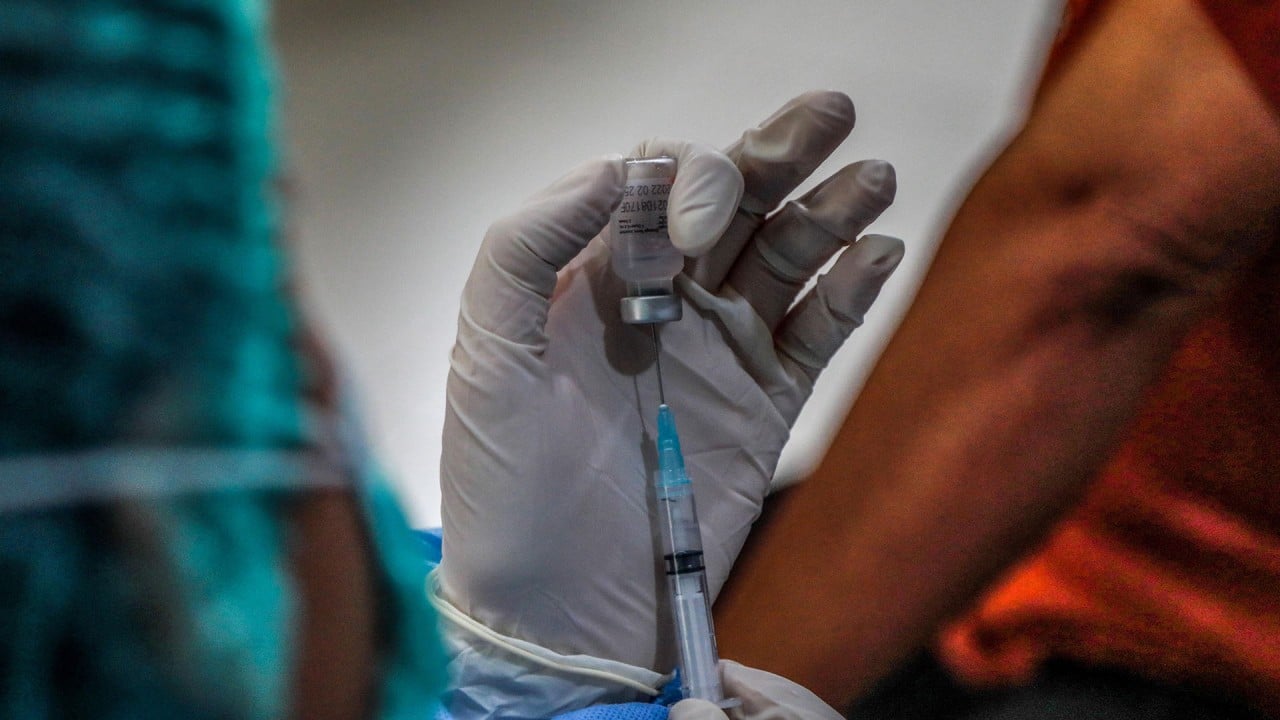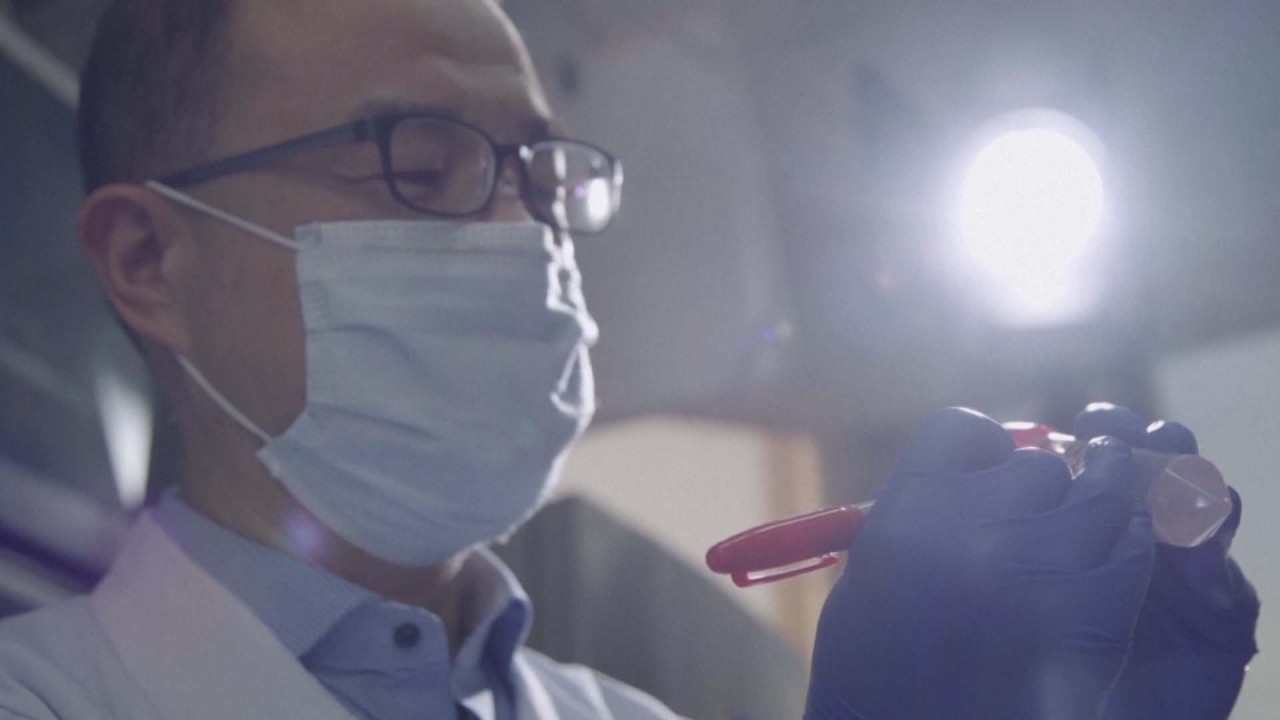
Which vaccines stop Omicron? Search for data moves from labs to real world
- As coronavirus variant’s rapid spread forces rethink of Covid-19 vaccine strategies, real-world data can help show jabs’ effectiveness against it
- But various challenges surround that data, not least that it is difficult to get until Omicron has infected even more people, and in more countries
Initial real-world findings on protection offered by doses from Pfizer, AstraZeneca and Johnson & Johnson have been released in recent days, adding critical information that could inform national health policies and World Health Organization (WHO) recommendations. Already countries are calling for boosters, which data suggests bolster protection.
But several factors will determine how clarity emerges on China’s vaccines, judging by accounts from experts who have been involved in similar studies in countries that use them.
Two WHO-licensed Chinese shots – from Sinovac Biotech and Sinopharm – are among the world’s most widely used. These vaccines, made using a traditional technology that relies on an inactivated virus, already had lower effectiveness than vaccines that use the cutting-edge mRNA method.
Understanding how they protect against Omicron, on their own and with boosters, could prove critical for people and policies in China and countries across the developing world that have relied on the shots.
One reason results on these shots could arrive after initial data for several other vaccines is simply that Omicron has only begun to take off in some of the major countries that previously led the way in generating real-world effectiveness data.
Other factors, such as less robust sequencing systems, and how countries count and categorise their cases, could also complicate obtaining this data.
In addition, there has been only sporadic and relatively small-scale spread of the virus in mainland China itself, where these doses feature prominently in the country’s 85 per cent vaccine coverage, and in Hong Kong, where Sinovac’s CoronaVac is one of two vaccines in use. That means that scientists there have no possibility of running real-world studies.
“We would want to do [these studies] in Hong Kong, but fortunately we don’t have the cases to demonstrate what level of protection the inactivated vaccines have,” said Leo Poon Lit-man, a professor at the University of Hong Kong. “That means [to acquire data] we have to rely on other countries that are using the inactivated vaccines.”
Poon was involved in recent lab-based research in Hong Kong, which found Pfizer/BioNTech’s two-dose course and two shots from Sinovac’s CoronaVac both provided “very poor” neutralising ability against Omicron. A booster of the Pfizer/BioNTech vaccine added to either course raised those protective levels, but a third dose from Sinovac did not for those who received CoronaVac initially.
But these lab findings capture an easily measurable antibody response that works to stop the virus binding to cells, according to Poon, while other parts of the immune system are also thought to play a role in keeping the virus’ effects at bay.
“It doesn’t mean that the vaccines cannot induce any protection … there are other parameters, which we know can reduce or prevent infections or reduce disease severity,” Poon said.
“These are not being studied well [because] we don’t have a benchmark for them … so right now we only have part of the story.”
South American countries using Sinovac jabs could prove important sources of real-world studies of how vaccinated people are faring versus those who are not vaccinated.
Coronavirus: WHO gives the nod for mix-and-match vaccine schedules
Several of those countries have only just begun to report significant spread of the Omicron variant, which had already swept the United States, Europe and parts of Africa.
“Assuming that Omicron will become the predominant variant, Chile’s health ministry should be able to estimate real-world vaccine effectiveness of the complete primary vaccination schedule of two doses and also with boosters relatively quickly,” said Eduardo Undurraga, an assistant professor at Chile’s Pontificia Universidad Catolica.
There would still be challenges, he explained. One is that a high proportion of Chile’s population is vaccinated, leaving a limited group to draw a comparison with.
“The second challenge relates to the limitations in genomic surveillance, which makes it difficult to reliably estimate the distribution of variants in Chile,” said Undurraga, who has been involved in previous effectiveness studies.
Brazil, where Omicron case numbers are taking off, would be a “great place to get data on CoronaVac”, given its good surveillance system, large number of full vaccinations and third shots given, and robust research community, according to Matt Hitchings, an assistant professor of biostatistics at the University of Florida, who works on vaccine effectiveness studies in the country.
But he and his colleagues have faced challenges in the past in getting consistent access to information linking positive cases with genetic sequencing data, to enable them to know which variants people were infected by.
Another issue is that Brazil’s official data has recently excluded most mild cases, focusing instead on the severely ill and hospitalised people, which may mean that Omicron cases are missed in the system, according to Hitchings.
In Asia, experts are also watching countries including Singapore and Thailand, where Omicron’s spread has grown in recent days, for information on CoronaVac’s effectiveness.
“We still have gaps – we do not have the same amount of data that we would like to see on all the WHO [emergency use-listed] vaccines … but we are working with our regional offices, with our country offices, with ministries of health to put in place tracking and monitoring systems that are going to give us the data in the coming days,” WHO chief scientist Soumya Swaminathan said last week.
WHO incident manager Abdi Mahamud on Tuesday said the agency predicted that vaccines, including the Chinese ones it had listed, would maintain protection against hospitalisation and death from Omicron.
Effectiveness data bearing this out can help administrators of the global vaccine distribution programme Covax to decide whether adjustments need to be made to their portfolio in the face of Omicron’s spread. They can also inform policy recommendations on boosters or vaccine usage made by the WHO’s Strategic Advisory Group of Experts on Immunisation (SAGE).
“The worst thing to do in the current setting would be to deploy a vaccine that we think works, that in fact does not – it generates a lack of trust in the vaccines and in the governments that provide them,” said Jerome Kim, director general of the Seoul-based International Vaccine Institute (IVI).
“It is really important to collect information, because if we find out that vaccines aren’t effective [in certain situations], then [how] should the WHO reconsider its recommendation for the use of the vaccine?” he said. “There are lots of questions still to be answered.”
Another complexity for generating data is the wide use of booster shots from different vaccine makers. Understanding the effectiveness of these shots in combination is also important, as health authorities seek to optimise vaccine regimens.
In Turkey, where fourth vaccine doses are available for some people, analysing data is getting more “complicated day by day”, according to Erhan Eser, a professor at the country’s Manisa Celal Bayar University School of Medicine.
Eser runs an ongoing study on vaccine effectiveness in health care workers that includes those vaccinated with CoronaVac who have received both that and Pfizer/BioNTech shots as boosters.
“As it has been shown that [Pfizer/BioNTech’s shot] is more effective than the inactivated vaccine [by Sinovac], people tend to have the booster vaccine doses with [BioNTech],” he said.
Eser said he would expect Omicron’s impact on these vaccine regimens to be reflected in data collected during his team’s scheduled assessment point in April. The variant is expected to become dominant in Turkey in the coming weeks.
Omicron evades protection from 2 doses of Sinopharm vaccine: study
For Sinopharm’s vaccine, such data could be collected in places including Bahrain and the United Arab Emirates, where various booster shots have been rolled out following vaccination campaigns with the inactivated vaccine.
The IVI is also working with Mozambique to conduct effectiveness and so-called mix/match studies with Sinopharm’s vaccine, while plans are in place to conduct an additional effectiveness evaluation in Madagascar. Both of these have the potential to generate information relevant to Omicron, depending on the national situations.
While some countries may learn about vaccine protection against Omicron as the variant hits populations and spreads, that is not likely to be the case for China, which has maintained a zero-Covid stance.
That also makes obtaining this information from elsewhere all the more important, given that immunity in China rests on vaccinations, in contrast to parts of the world where large portions of the population also have immunity from prior infection, according to Yanzhong Huang, a senior fellow for global health at the Council on Foreign Relations in New York.
Although it appeared clear that, as with other two-dose courses, China’s inactivated vaccines would offer reduced protection against infection by Omicron, the critical question was “are they still effective in terms of reducing the risk of severe disease or death?”
“If the answer is no, people will ask, what do we need this vaccine for?” he said, adding: “It’s still premature to jump to conclusions for now.”



